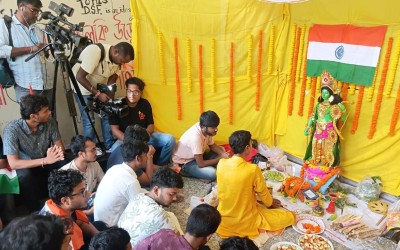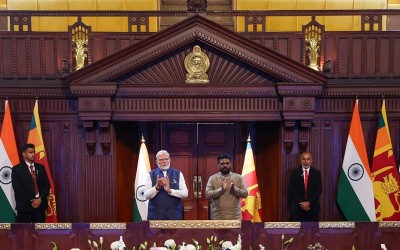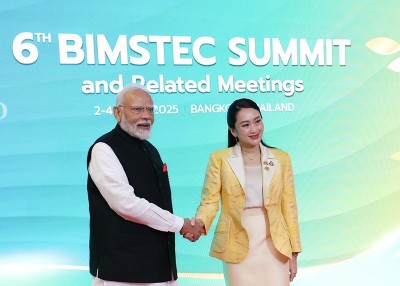
J&K: Policy Paralysis
Significantly, at least 39 of the 68 reported deaths were recorded in the first week of street violence - 38 protestors and one Policeman. During the next seven days, another six persons - five protestors and one Policeman were killed. Thus over 66 per cent of such fatalities were reported during the first two weeks of violence. In subsequent weeks, though incidents of clashes between SFs and protesters were still being reported on an almost daily basis, the level of volatility has gone down considerably. Not surprisingly, curfew which was imposed in large parts of the Valley in the beginning has now been restricted to just a few areas. In a statement released on August 19, 2016, the J&K Police stated that curfew was imposed in Srinagar, Kaloosa in Bandipora area of Baramulla District, and in the towns of Anantnag, Shopian and Pampore. However, the statement, added, "The restrictions under Section 144/CrPC [Criminal Penal Code] remained in force in Kashmir valley today." Section 144/CrPC basically restricts people from assembling in groups.
The ongoing protest is primarily the handiwork of Islamabad. In a video released by the National Investigation Agency (NIA) on August 10, 2016, an arrested Lashkar-e-Toiba (LeT) militant Bahadur Ali states,
.When I contacted them [Alpha-3] again they told me that one of our brothers, a mujahid, has been killed in Srinagar. His name is Burhan Wani and the situation in Kashmir has deteriorated because of his killing and that people are throwing stones at the Indian forces. I was told that two of my partners have fuelled the protests and that I have to do the same, participate in protests with grenades in hand... throw them at the Indian forces so that situation in Kashmir will deteriorate.
In its August 10, 2016, Press Release, NIA noted,
As per Bahadur Ali and other available evidence, control centre Alpha-3 is a fixed communication centre, established at a high altitude peak in Pakistan occupied Kashmir, which is operated with support from Pakistani forces. Once the terrorists are inside Indian territory, Alpha-3 guides, directs and controls their operations. Whenever required, Alpha-3 arranges tactical and material support through previously identified contacts.
Bahadur Ali aka Saifulla, son of Mohammed Haneef (Haneefi Deobandi), resident of Village Zia Bagha, near Haloka Bridge, Tehsil (revenue unit) Raiwind, District Lahore, Pakistan, was arrested on July 25, 2016, from the Yahama area of Kupwara District.
Revelations made by Bahadur Ali are corroborated by recent reports confirming that terrorists have openly joined protestors at several places. According to reports, LeT 'commander' Abu Dujana, who is presently heading the outfit in the Valley, attended a gathering in the Karimabad area of Pulwama District on July 31, 2016, wearing a mask.
Pakistan's role in the recent troubles has also been highlighted by the Indian Government. Addressing the Indian Parliament on July 21, 2016, Union Home Minister (UHM) Rajnath Singh reiterated that Pakistan played a "key role" in fomenting the recent protests in Kashmir.
Pakistan's role was well established in the earlier orchestrated rage of 2008, 2010and 2013. Those protests, aided and abetted by inimical agencies from across the border in connivance with their proxies on the Indian side, lost steam, with diminishing support, in due course. The current cycle of street violence is bound to come to a similar end.
However, things have been made difficult on the security front by the inept handling of the situation by Governments both at the Union and Sate level. First in a bizarre move, the incumbent State Government, soon after assuming office in April 2016, reportedly decided to disband the three-tier security grid. The grid comprised the Army and the Border Security Force (BSF) on the LoC; the Army and paramilitary troops in the Valley; and J&K Police as the final layer. The Army and BSF shared intelligence about infiltration with the Army and paramilitary forces in the Valley, who then synergised their movements with J&K Police to track down infiltrators. However, as the Army was completely withdrawn it led to a breakdown in intelligence sharing with the J&K Police. The effective interface between the Army and Police collapsed.
Further, in spite of visible evidences and admissions by the Government that the current cycle of street violence, as on previous occasions, were an act of aggression from across the border, Governments have been found short of ideas. Instead of allowing the SFs to assess the ground situation and act accordingly, both the Central and State Governments publicly asked them to "exercise maximum restraint," escalating violence by protestors and implicitly suggesting that SF actions were not justified by the situation. An unnamed security officer was thus quoted as stating, "Even on August 9, we spotted three armed militants in a protest demonstration at Lalpora in Lolab area of Kupwara District. We did not strike them as there was every apprehension of civilian casualties." Indeed, the mindless and ill-informed public discourse on operational procedures is enormously hampering security operations.
Meanwhile, reports indicate that not a single raid or counterinsurgency operation was conducted in the plains till August 15, 2016, since the beginning of the street protests on July 9, 2016. On August 15, 2016, an encounter took place between SFs and militants in Srinagar, in which a commandant of the Central Reserve Police Force (CRPF) Pramod Kumar was martyred and two militants were killed. "No reason has been specified, though it is clear enough that operations have been suspended for fear of mob attacks and civilian casualties," according to security sources. This has emboldened the sagging spirit of the separatists and terrorists.
Not surprisingly, terrorists have carried out 17 attacks between July 9, 2016 and August 19, 2016 (excluding the August 15 attack), resulting in one fatality among the SFs. Three civilians have also been killed by terrorists during this period. During the whole of 2016, the total number of civilians killed in terrorism-related incidents stands at eight.
The SFs have, however, continued with operation in areas along the Line of Control (LoC) and have killed 21 terrorists. SFs have also lost 10 of their personnel in these operations. According to official figures, released on July 19, 2016, the number of infiltration attempts in the current year was 51 (up to May 2016).
The current crisis is nothing more than an attempt by Islamabad to reverse the process of deepening peace in J&K. Fighting all odds, SFs have managed to restore a semblance of peace through sheer resolve and efficiency. The effective leadership required to secure a more enduring resolution of the crisis has, however, been conspicuous in its absence.
Indeed, in a rather bizarre move, addressing Parliament on August 10, 2016, UHM Rajnath Singh stated that Union Government is ready to talk to "mainstream political parties, moderates and other organisations." This statement clearly tells the sorry state of affairs in New Delhi, suggesting that UHM Singh is not aware that none of these three - mainstream political parties, moderates and other organisations - are party to the current cycle of violence. Talking about talks with these people, at this juncture, make little sense. But what more only can be expected from a Government which lapses into a deep slumber during periods when there was a genuine and conducive environment for talks among most of the democratic stakeholders.
Support Our Journalism
We cannot do without you.. your contribution supports unbiased journalism
IBNS is not driven by any ism- not wokeism, not racism, not skewed secularism, not hyper right-wing or left liberal ideals, nor by any hardline religious beliefs or hyper nationalism. We want to serve you good old objective news, as they are. We do not judge or preach. We let people decide for themselves. We only try to present factual and well-sourced news.







